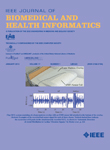
IEEE Journal of Biomedical and Health Informatics
Scope & Guideline
Driving Innovation in Health Informatics and Patient Care
Introduction
Aims and Scopes
- Biomedical Data Analysis and Machine Learning:
The journal focuses on the application of machine learning techniques to analyze biomedical data, including genomics, imaging, and electronic health records. It promotes research that develops algorithms for predictive modeling, classification, and risk assessment in healthcare. - Health Monitoring Technologies:
Research in this area includes the development and validation of wearable and remote monitoring devices that track physiological parameters. The journal highlights studies that utilize these technologies for chronic disease management and real-time health monitoring. - Medical Imaging and Image Processing:
A core area of the journal is the application of deep learning and other computational techniques to enhance medical imaging. This includes image segmentation, classification, and analysis to support diagnosis and treatment planning. - Health Informatics and Decision Support Systems:
The journal publishes research that integrates health informatics with clinical workflows, emphasizing the development of decision support systems that aid healthcare professionals in making evidence-based decisions. - Privacy and Security in Health Data:
Given the sensitive nature of health data, the journal addresses methodologies that ensure privacy and security in the sharing and analysis of health information, particularly in the context of IoT and federated learning. - Patient-Centric Approaches and Digital Health:
Research that emphasizes user engagement, personalized medicine, and patient-centric health solutions is a significant focus. The journal encourages studies that explore the intersection of technology and patient care.
Trending and Emerging
- Artificial Intelligence in Healthcare:
AI continues to dominate the research landscape, with a surge in studies applying deep learning and machine learning techniques to improve diagnostics, treatment outcomes, and personalized medicine. - Wearable Health Technology and Remote Monitoring:
There is an emerging trend in research focusing on wearable devices and remote health monitoring solutions. This includes advancements in sensor technology and algorithms for real-time data processing, which are critical for managing chronic diseases. - Federated Learning and Privacy-Preserving Techniques:
With increasing concerns over data privacy, there is a growing focus on federated learning approaches that allow collaborative model training without sharing sensitive health data. This trend is vital for enhancing the security of health informatics. - Multimodal Data Integration:
The integration of multimodal data sources, such as combining imaging, genomic, and clinical data, is gaining traction. Researchers are exploring how these diverse datasets can improve predictive modeling and patient outcomes. - Telehealth and Digital Therapeutics:
The COVID-19 pandemic has accelerated the development of telehealth solutions and digital therapeutics, leading to an increase in research focused on remote patient care, virtual consultations, and digital health interventions. - Explainable AI in Medical Applications:
As AI becomes more prevalent in healthcare, there is a rising emphasis on explainability and transparency in AI models. Researchers are developing methods to ensure that AI-driven decisions can be understood and trusted by clinicians.
Declining or Waning
- Traditional Statistical Methods in Health Research:
There seems to be a reduced focus on conventional statistical approaches in favor of more advanced machine learning and artificial intelligence techniques. This shift indicates a growing preference for complex models that can handle high-dimensional data and provide deeper insights. - Basic Health Technology Assessments:
Research that simply evaluates the efficacy of health technologies without integrating advanced computational methods or data analytics appears less frequently. The focus has shifted towards more sophisticated analyses that combine multiple data sources and advanced algorithms. - Single-Modal Data Approaches:
The use of single-modality data for health assessments is becoming less common, as there is a growing emphasis on multimodal data integration. Studies that solely rely on one type of data source, such as imaging or clinical records, are being overshadowed by research that combines various modalities. - General Health Informatics without Specific Applications:
There is a noticeable decline in publications that discuss health informatics in broad terms without a specific application or case study. The journal is increasingly favoring research that demonstrates practical implementations and real-world impacts.
Similar Journals

Journal of Information and Communication Technology-Malaysia
Empowering Ideas in Computer Science and ICTJournal of Information and Communication Technology-Malaysia is a respected open-access journal published by UNIV UTARA MALAYSIA PRESS, dedicated to advancing knowledge in the fields of Information Technology, Computer Science, and Mathematics. With an ISSN of 1675-414X and an E-ISSN of 2180-3862, this journal has been providing a platform for innovative research since its establishment in 2009. The journal is indexed in Scopus with commendable rankings in Mathematics and Computer Science categories, highlighting its contribution to the academic community, particularly with its Q3 quartile status in both fields as of 2023. As it converges research from 2011 to 2024, the journal invites submissions that explore contemporary challenges and technological advancements, catering to a global audience of researchers, professionals, and students interested in the rapidly evolving domains of ICT. By ensuring open access to its articles, the journal promotes widespread dissemination and accessibility of cutting-edge research, thereby supporting the collaborative development of ideas and solutions in these critical areas.
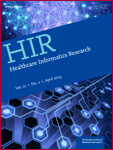
Healthcare Informatics Research
Fostering collaboration and knowledge sharing in health informatics.Healthcare Informatics Research, published by the Korean Society of Medical Informatics, is a leading open access journal that has been advancing the field of healthcare informatics since its inception in 2010. With an ISSN of 2093-3681 and E-ISSN of 2093-369X, the journal provides a vital platform for disseminating high-quality research aimed at improving healthcare systems through innovative informatics solutions. Recognized for its contributions, it holds a Q2 rank in Biomedical Engineering and Q3 rankings in both Health Informatics and Health Information Management for 2023, reflecting its stature within the academic community. The journal is committed to open access, ensuring that research is freely accessible to researchers, professionals, and students worldwide, thus promoting knowledge sharing and collaboration. Located in the dynamic city of Seoul, South Korea, the journal serves as a hub for groundbreaking studies that impact health systems globally, making it an essential resource for those at the forefront of healthcare technology and management.
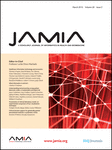
JOURNAL OF THE AMERICAN MEDICAL INFORMATICS ASSOCIATION
Fostering Interdisciplinary Collaboration in Health InformaticsThe Journal of the American Medical Informatics Association, published by Oxford University Press, stands as a premier publication within the field of Health Informatics, showcasing cutting-edge research and innovative practices. With an impressive Q1 category ranking in 2023 and a remarkable Scopus rank of #6 out of 138, this journal consistently contributes to the advancement of knowledge and application in medical informatics, making it a vital resource for researchers, healthcare professionals, and students alike. Since its inception in 1994, the journal has fostered interdisciplinary collaboration and provides a platform for high-quality research that drives improvements in healthcare practices and technology. Although it operates on a subscription model, the journal's impactful findings and comprehensive analyses are essential for those looking to stay at the forefront of health informatics innovations.
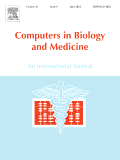
COMPUTERS IN BIOLOGY AND MEDICINE
Bridging the Gap Between Biology and TechnologyCOMPUTERS IN BIOLOGY AND MEDICINE is a prestigious academic journal published by Pergamon-Elsevier Science Ltd, dedicated to advancing the fields of Computer Science Applications and Health Informatics. With an impressive impact factor and ranking within the Q1 quartile for both categories, this journal plays a crucial role in disseminating high-quality research findings that influence cutting-edge developments at the intersection of computing and healthcare. Covering a broad range of topics from computational biology to medical informatics, it serves as a vital resource for researchers, professionals, and students striving to harness technology for medical advancements. The journal has been publishing since 1970 and continues to evolve, incorporating the latest trends and innovations in the field, thereby ensuring that it remains a key contributor to scientific inquiry and knowledge. With accessible content and a global reach, COMPUTERS IN BIOLOGY AND MEDICINE invites submissions that elevate the understanding and application of computational methods in biological and medical contexts.

Healthcare Technology Letters
Advancing healthcare through innovative technology insights.Healthcare Technology Letters is a leading open-access journal published by WILEY that has been at the forefront of disseminating cutting-edge research in the field of health informatics and health information management since its inception in 2014. With an E-ISSN of 2053-3713, this esteemed journal is recognized for its commitment to advancing knowledge and practice in healthcare technology, making it a vital resource for researchers, professionals, and students alike. The journal's scope encompasses a wide range of topics, including digital health solutions, data management, and innovative technologies that enhance patient care. It holds a respectable position in the academic community, featuring a Q3 ranking in both health informatics and health information management as of 2023, and consistently contributing to high-impact research evidenced by its Scopus rankings. By providing open access to its content since 2017, Healthcare Technology Letters ensures that valuable insights and breakthroughs can reach a broader audience, furthering the impact of its published work on the global health landscape.
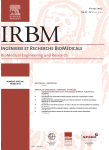
IRBM
Fostering Collaboration for Groundbreaking Scientific InsightsIRBM, published by Elsevier Science Inc, stands at the forefront of research in the domains of Biomedical Engineering and Biophysics, boasting impressively high rankings with a Q1 category in both fields according to the 2023 evaluations. With an effective focus on cutting-edge innovations and methodologies, IRBM provides a vital platform for researchers, professionals, and students alike seeking to disseminate and access groundbreaking findings and developments. Its strong presence in the Scopus database, with ranks of #12 in Biochemistry, Genetics and Molecular Biology and #42 in Biomedical Engineering, places it in the top percentile of impactful journals in the field, making it a crucial resource for advancing knowledge and fostering collaboration. While the journal maintains a traditional subscription model, it continues to attract a diverse readership eager for insightful studies and reviews that push the boundaries of science and engineering. With a projected convergence of years extending to 2024, IRBM promises to remain a significant contributor to the ongoing dialogue in the life sciences.
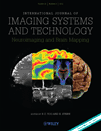
INTERNATIONAL JOURNAL OF IMAGING SYSTEMS AND TECHNOLOGY
Advancing Imaging Knowledge for Tomorrow's InnovationsINTERNATIONAL JOURNAL OF IMAGING SYSTEMS AND TECHNOLOGY, published by Wiley, is a leading journal dedicated to advancing the field of imaging systems and technologies. With an ISSN of 0899-9457 and E-ISSN 1098-1098, this esteemed journal offers a platform for high-quality research spanning essential interdisciplinary areas, including Biomedical Engineering, Computer Science, and Health Informatics. Recognized for its impactful contributions, it holds a commendable position in the Q2 quartile across multiple categories as of 2023. The journal boasts an excellent Scopus ranking, with notable acknowledgments like rank #49 out of 333 in Radiology, Nuclear Medicine, and Imaging, showcasing its relevance and importance in the academic community. Publishes annually from 1989 to 2024, it aims to bridge gaps in knowledge and foster innovative developments through rigorous peer-reviewed articles. Though it operates under a traditional access model, the journal maintains an accessible repository of cutting-edge research, making it indispensable for researchers, professionals, and students alike seeking to stay at the forefront of imaging technology advancements.

BMC Medical Informatics and Decision Making
Connecting research and practice in health informatics.BMC Medical Informatics and Decision Making is a leading journal in the fields of medical informatics and health policy, published by BMC since its inception in 2001. With an impressive impact factor reflecting its status as a Q1 journal in both Computer Science Applications and Health Informatics, it serves as a vital resource for researchers, professionals, and students dedicated to advancing healthcare through informatics. The journal is committed to disseminating high-quality, peer-reviewed research focused on the innovative use of information technology in healthcare, decision-making processes, and policy formulation. As an Open Access platform, it ensures that findings are widely accessible and can foster collaboration across various disciplines. Positioned at the cutting edge of health informatics, BMC Medical Informatics and Decision Making aims to influence practice and inspire new research directions, making it an essential publication for anyone involved in improving health systems worldwide.
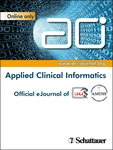
Applied Clinical Informatics
Empowering clinical excellence with technology-driven insights.Applied Clinical Informatics is a leading journal dedicated to the expanding field of health informatics and its applications within clinical settings. Published by GEORG THIEME VERLAG KG in Germany, this journal serves as a pivotal platform for researchers and professionals engaged in the integration of technology and healthcare, aiming to improve patient outcomes through innovative informatics solutions. With a solid Q2 ranking in multiple disciplines including Computer Science Applications, Health Informatics, and Health Information Management, it reflects its prominent position in the academic landscape. The journal provides accessible content while fostering dialogue on key issues and advancements in clinical informatics. Covering a wide array of topics from data management to e-health applications, Applied Clinical Informatics is essential reading for those looking to stay attuned to the latest research and developments from 2009 to 2024, enriching the knowledge base of students, professionals, and researchers worldwide.
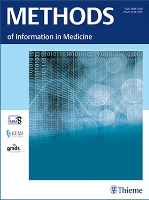
METHODS OF INFORMATION IN MEDICINE
Exploring the Intersection of Medicine and Information Science.METHODS OF INFORMATION IN MEDICINE, published by Georg Thieme Verlag KG, stands at the forefront of medical knowledge dissemination, pushing the boundaries of Advanced and Specialized Nursing, Health Informatics, and Health Information Management. Established in 1962, this prestigious journal has continuously evolved to address the dynamic landscape of healthcare and information technology, aiming to bridge the gap between clinical practice and innovative information technologies. With a robust impact factor reflected in its 2023 Scopus rankings, where it holds a commendable position in Q1 for Advanced Nursing, it serves as an invaluable resource for researchers, practitioners, and students alike. While it maintains a subscription-based access model, the journal fosters the exchange of pioneering methodologies and transformative ideas that are crucial for advancing healthcare delivery and improving patient outcomes. Explore the latest research, expert insights, and cutting-edge developments that solidify the journal’s role as a leader in the interdisciplinary approach to medicine and information systems.